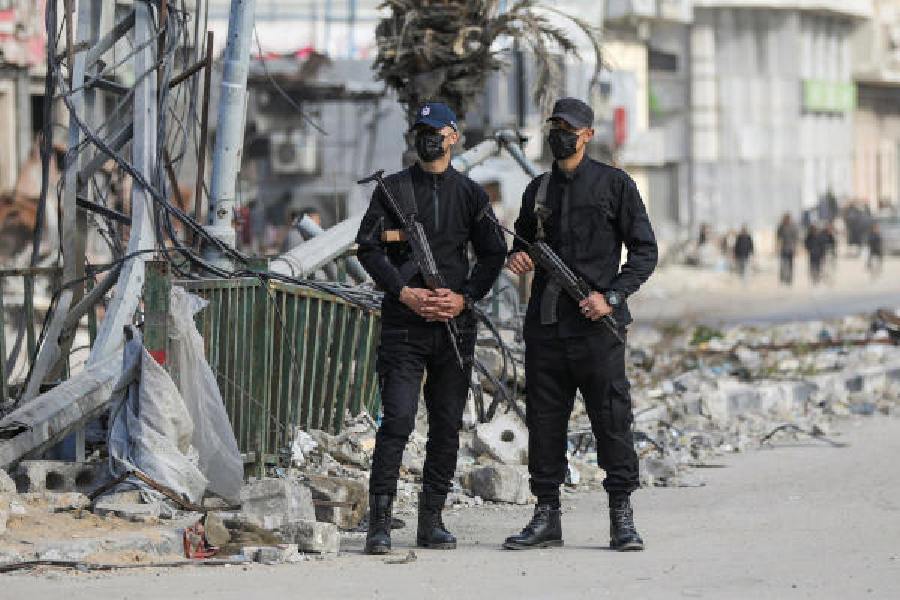As a ceasefire brought calm to Gaza’s ruined cities, Hamas was quick to emerge from the rubble.
The militant group has not only survived 15 months of war with Israel — among the deadliest and most destructive in recent memory — but it remains firmly in control of the coastal territory that now resembles an apocalyptic wasteland.
With a surge of humanitarian aid promised as part of the ceasefire deal, the Hamas-run government said on Monday that it will coordinate distribution to the desperate people of Gaza. For all the military might Israel deployed in Gaza, it failed to remove Hamas from power, one of its central war aims. That could make a return to fighting more likely, but the results might be the same.
There was an element of theatre in Sunday’s handover of three Israeli hostages to the Red Cross, when dozens of masked Hamas fighters wearing green headbands and military fatigues paraded in front of cameras and held back a crowd of hundreds who surrounded the vehicles.
The scenes elsewhere in Gaza were even more remarkable: Thousands of Hamas-run police in uniform re-emerged, making their presence known even in the most heavily destroyed areas.
“The police have been here the whole time, but they were not wearing their uniforms” to avoid being targeted by Israel, said Mohammed Abed, a father of three who returned to his home in Gaza City more than seven months after fleeing the area.
“They were among the displaced people in the tents. That’s why there were no thefts,” he said.
Other residents said the police had maintained offices in hospitals and other locations throughout the war, where people could report crimes.
Israel has repeatedly blamed Hamas for the heavy civilian death toll and damage to infrastructure because the group’s fighters and security forces embed themselves in residential neighbourhoods, schools and hospitals.
Opinion polls consistently show that only a minority of Palestinians support Hamas. But the Islamic militant group — which does not accept Israel’s existence — is deeply rooted in Palestinian society, with an armed wing, a political party, media and charities that date back to its founding in the late 1980s.
For decades, Hamas functioned as a well-organised insurgency, able to launch hit-and-run attacks on Israeli forces and suicide bombings in Israel itself. Many of its top leaders have been killed — and quickly replaced. It won a landslide victory in 2006 parliamentary elections, and the following year it seized Gaza from the western-backed Palestinian Authority in a week of street battles.
Hamas then established a fully-fledged government, with ministries, police and a civilian bureaucracy. Its security forces quickly brought Gaza’s powerful families into line and crushed rival armed groups. They also silenced dissent and violently dispersed occasional protests.
Hamas remained in power through four previous wars with Israel. With help from Iran it steadily enhanced its capabilities, extended the range of its rockets and built deeper and longer tunnels to hide from Israeli airstrikes. By October 7, 2023, it had an army of tens of thousands in organised battalions.











